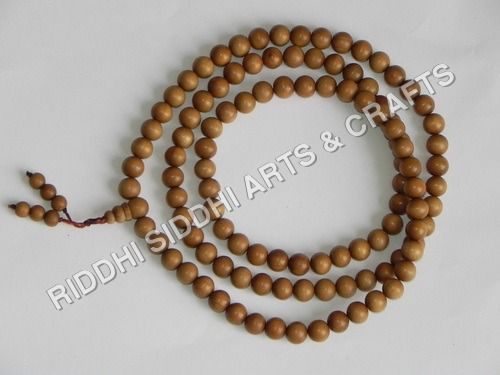
Sandalwood Finished Beads
Product Details:
Sandalwood Finished Beads Price And Quantity
- 800 Piece
- 2.00 - 3.00 USD ($)
- 3 USD ($)
Product Description
Sandalwood Finished Beads
o Sandalwood is one of the traditional materials used for Chanting Beads.
o A soothing, peaceful and fragrant wood from India it is said to attract positive subtle vibrations, bring clear perception, promote tranquility and a positive frame of mind.
o Sandalwood is an antidepressant, antiseptic, insecticide, and sedative wood. It can assist in the healing of cells and is used to assist the immune system in any healing process or to prevent illness.
o How to use your Sandalwood wrist Chanting Beads Recite one mantra; move your thumb and forefinger along the next bead of the strand; then repeat. The Sandalwood wrist Band, or beaded rosary, aids the practitioner in counting mantra recitations while also helping one to focus concentration and awareness. As one works the Chanting Beads with one's fingers, recites the mantra and visualizes the deity, one is at once involving the body, speech and mind. Some Chanting Beads Basics the Chanting Beads is held with gentleness and respect, generally in the left hand.
o One bead is counted for each recitation of the mantra, beginning with the first bead after the "guru" bead- the larger, more decorative bead at the Chanting Beads end. The first bead is held between the index finger and thumb, and with each count the thumb pulls another bead in place over the index finger.
o After completing a full circuit of the Chanting Beads, the practitioner flips the Chanting Beads around 180 degrees (this takes practice to accomplish) and continues as before, in reverse order. One aims to avoid passing over the "guru" bead, as doing so is symbolically like stepping over one's teacher.





 Send Inquiry
Send Inquiry Send SMS
Send SMS